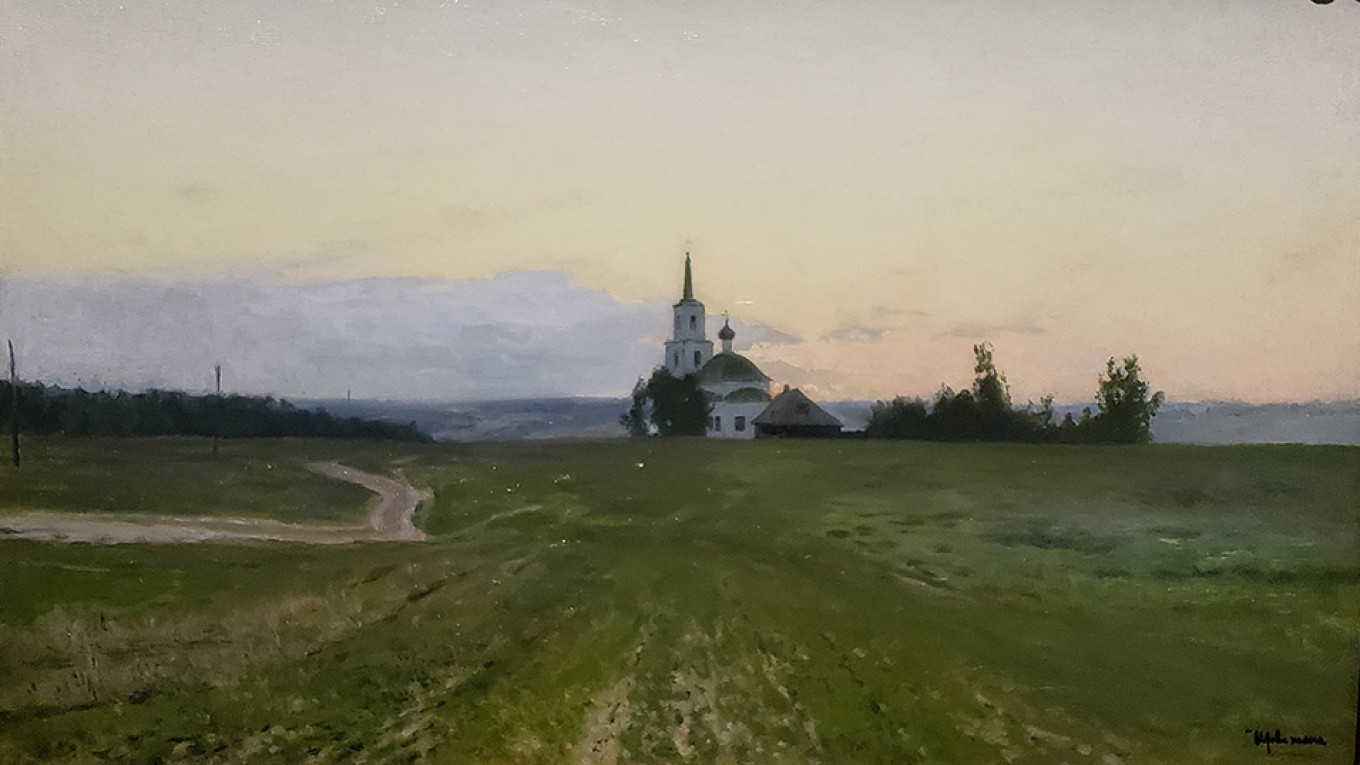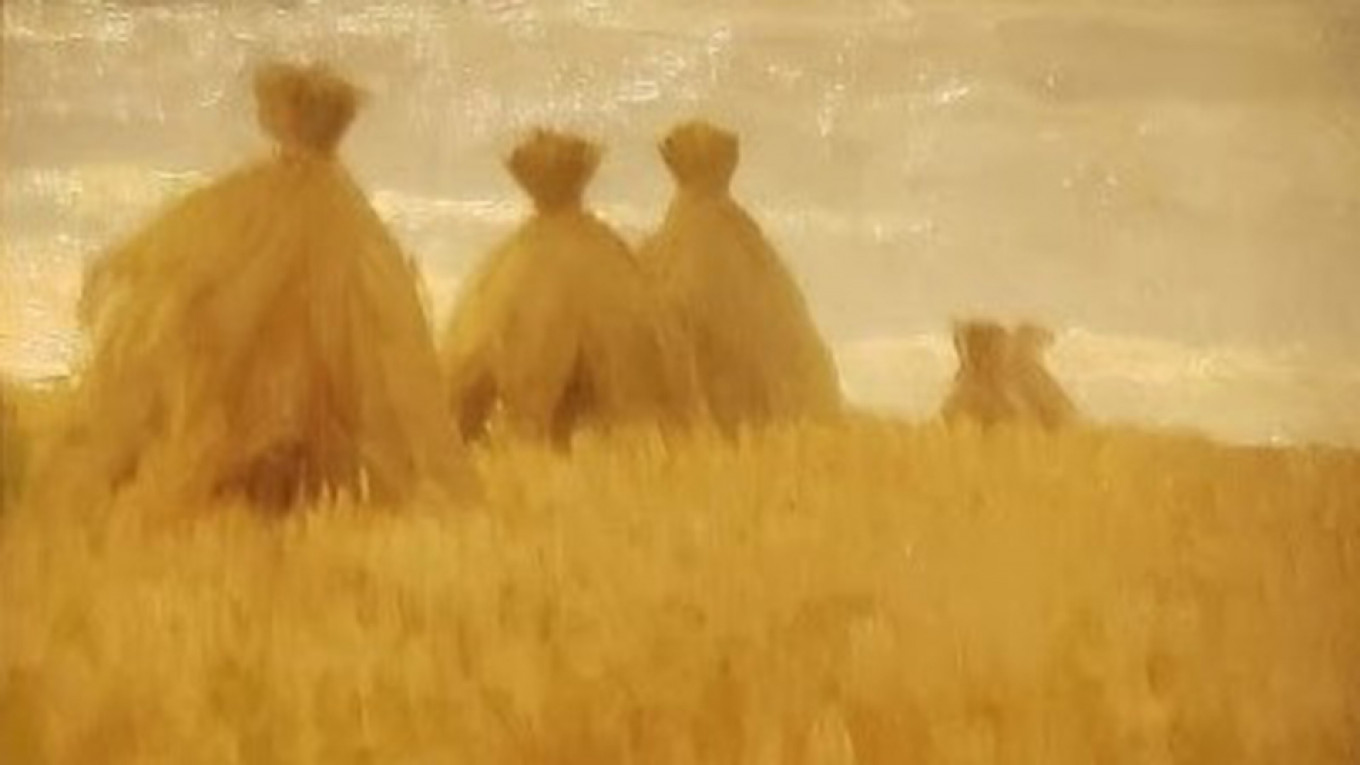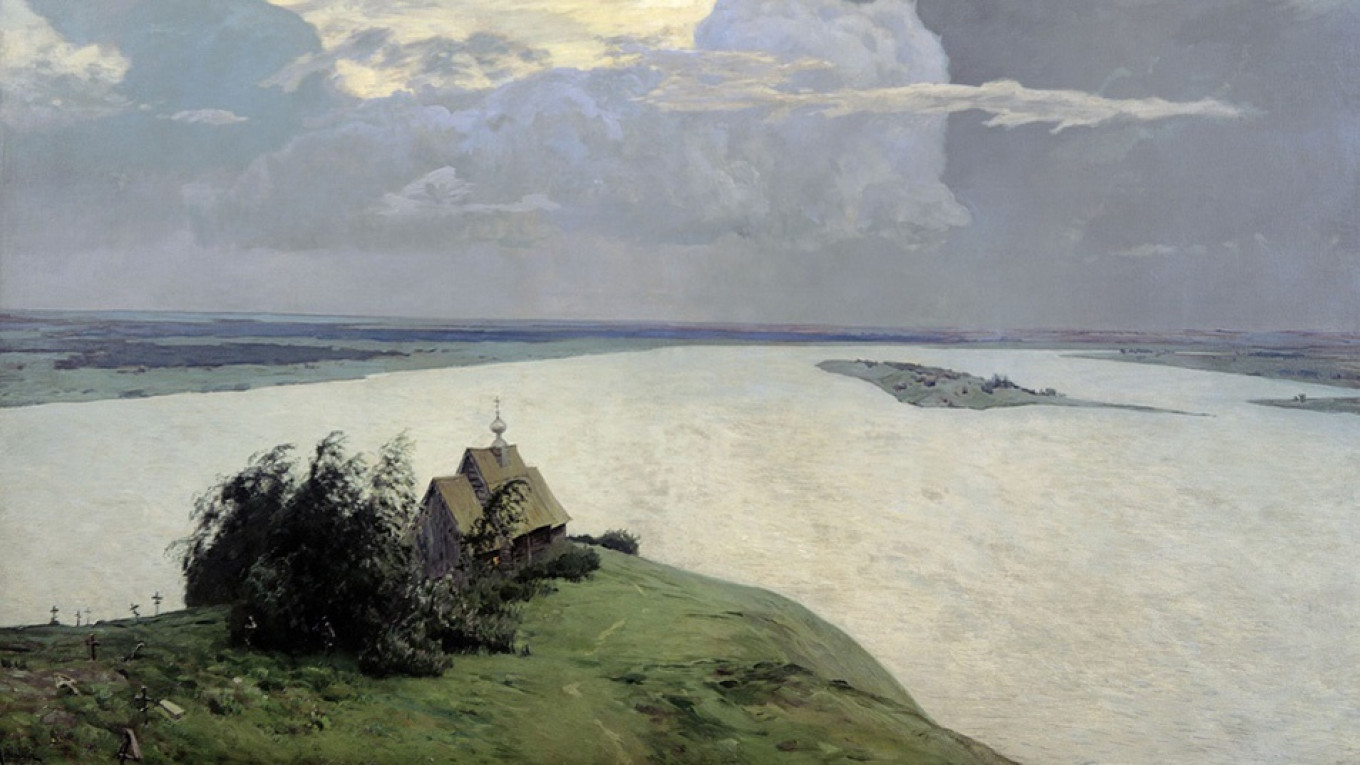We do not usually associate landscape paintings with cinema. By definition, the genre contains no people and little action — scant material for directors to turn into a movie. Nevertheless, as the Levitan and Cinematography exhibition at the Jewish Museum and Tolerance Center makes clear, we can learn a lot about Isaac Levitan, Russia’s most famous landscape painter of the 19th century, by examining his work through the lens of cinema.
Levitan, who died at age 39 in 1900, left the world just as cinema was entering it. Born in 1860 to Jewish parents in what is now Lithuania, he moved with his family in 1870 to Moscow, where he studied under some of Russia’s most famous painters.
It was not long before the art world took notice of his talent. In 1879 Pavel Tretyakov, founder of the Tretyakov Gallery, bought “Autumn Day. Sokolniki,” which, despite being an early work, is unmistakably Levitan. In this slightly mournful painting, a woman strolls down a long winding path flanked by golden hued trees. The only unusual element is the fact that there is a person in it, who, it turns out, was painted by the artist’s friend.
Tretyakov’s attention, unfortunately, was not enough to keep Levitan and his family from being expelled from the city when an order came out banning Jews from living within Moscow. This is just one example of the anti-Semitism Levitan had to face, which can be felt in the “outsiderness” of his landscapes.
Everything but the popcorn
The exhibition is in one room, and walking in, you get the impression that you’re entering a movie theater. The works are not hung on the walls, but mounted on stands embedded in billowing silvery sheets reminiscent of movie screens. The room is darkened, and sound effects seep out from hidden speakers. Four projectors juxtapose clips from Russian films with the paintings on the walls.
The darkened lighting in the exhibition, the phantom sounds coming from clips across the room, and the explicit mention of Tarkovsky in a text on the wall all accent the otherworldly nature of Levitan’s paintings. Often, in bright light and a more standard museum atmosphere, it’s easy miss this aspect of his work when admiring, say, one of his brightly hued autumn scenes. In fact, his work in this context can bring to mind the Zone from Tarkovsky’s 1979 “Stalker,” where the beautiful but eerie landscape itself becomes a sentient, and not altogether benign, being.
One of the more haunting paintings in the exhibition is called “Moonlit Night. The High Road.” which could easily be the stage for a horror movie. A long straight gravel road stretches out into the distance, lined with birch trees which, in the moonlight, cast long shadows onto the road. What brought us here in the middle of the night? How much further must we go?
In another painting, “Just Before Evening Falls,” Levitan shows a church across a field in the distance just before sunset and another road, this time snaking along the left side of the canvas. The scene feels strikingly empty, and we might think that everyone is at prayer while we are left outside. Churches appear in many of Levitan’s paintings, and at once can seem to represent the beauty of Russia, and the artist’s remove from them.

Rethinking Levitan through film
Russian movies, even ones not normally considered high-brow, often have long shots of nature used to set a mood, show the inner thoughts of the characters, or simply allow the viewer time to meditate on what has happened. Seeing Levitan’s paintings together with such clips from Russian film adds to the viewer's appreciation of the emotion and atmosphere in his canvases.
One juxtaposition that was particularly illuminating was that of the painting “Haystacks” with a clip from the 1970-1971 Soviet TV series “The Shadows Disappear at Noon.” In the painting, we see several haystacks leaning over crookedly. In the clip, a man is standing next to a carriage and some similar haystacks. Then he gets on the carriage and leaves us looking for more than 30 seconds at the scene he has left. The feeling in the painting, and in many of Levitan’s works, is not only vacant, but almost eerily emptied of its usual inhabitants, as if Russia has closed for the day and everyone had gone home.
Levitan’s landscapes depict a nostalgic Russia that some people long for, but which is ultimately unattainable. His images, with their quaint wooden churches and glimmering rivers, appear to be utterly realistic. This exhibition, fittingly held at the Jewish Museum and Tolerance Center, reminds us that he was painting from the outside, and that his Russia resides more in the imagination than in reality.
Isaac Levitan and Cinematography runs through Jan 20, 2019.
Jewish Museum and Tolerance Center. 11 Ulitsa Obraztsova, Bldg. 1A. Metro Marina Roshcha. www.jewish-museum.ru

A Message from The Moscow Times:
Dear readers,
We are facing unprecedented challenges. Russia's Prosecutor General's Office has designated The Moscow Times as an "undesirable" organization, criminalizing our work and putting our staff at risk of prosecution. This follows our earlier unjust labeling as a "foreign agent."
These actions are direct attempts to silence independent journalism in Russia. The authorities claim our work "discredits the decisions of the Russian leadership." We see things differently: we strive to provide accurate, unbiased reporting on Russia.
We, the journalists of The Moscow Times, refuse to be silenced. But to continue our work, we need your help.
Your support, no matter how small, makes a world of difference. If you can, please support us monthly starting from just $2. It's quick to set up, and every contribution makes a significant impact.
By supporting The Moscow Times, you're defending open, independent journalism in the face of repression. Thank you for standing with us.
Remind me later.






